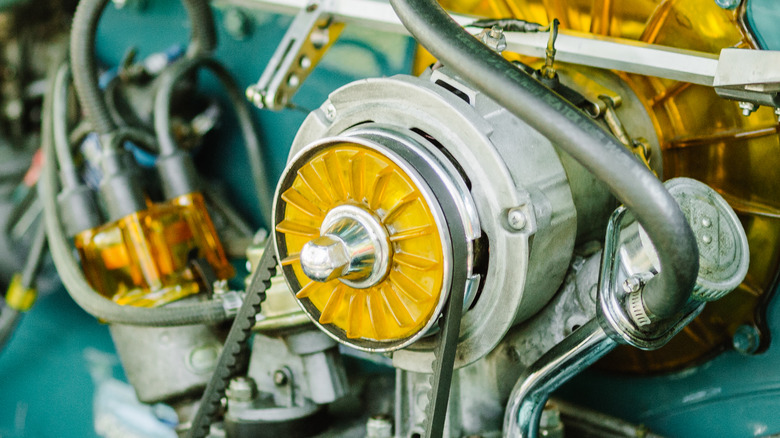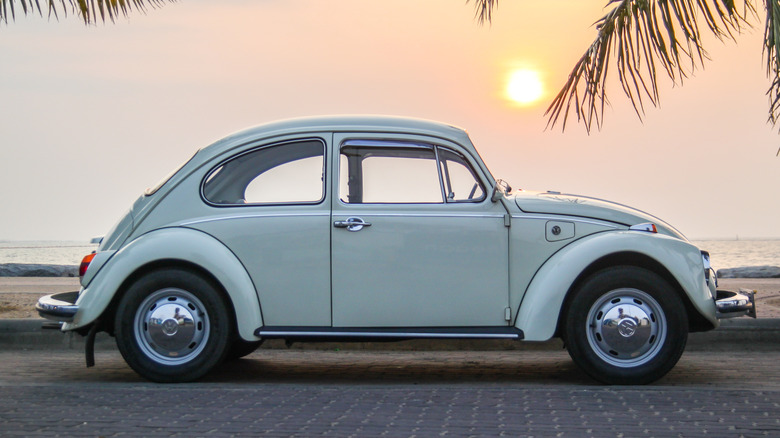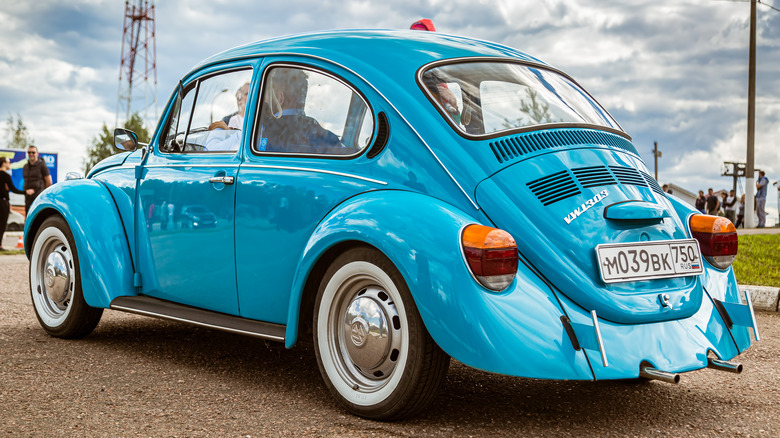Here's What Made Volkswagen's Air-Cooled Engine So Special
The Volkswagen Beetle (also called the VW Type-1) is one of the most recognizable vehicles of all time. In the United States, it was the de-facto symbol of counterculture hippies of the 1960s and 1970s and was a symbolic big slap in the face to the mile-long luxury barges and inefficient muscle cars from the era, according to Volkswagen. In post-World War II Europe, it was inexpensive and efficient transportation. For South and Central American customers, the original Beetle became a cultural icon, until its final production at the factory in Puebla, Mexico in 2003.
The Type-2 VW Microbus or Transporter was another from the greatest hits catalogue that exploded in popularity in the United States and markets abroad. Both the Type-1 and Type 2 were well-built vehicles that are still sought after today and fondly remembered by essentially everyone that ever owned one. At the heart of either car is an air-cooled boxer engine that has soldiered on for decades.
VW's long history of air cooled engines
Engines like the Chevy Small Block, Ford 5.0, Chrysler HEMI, and Toyota 2JZ are known for power, torque, and how quickly they can propel a hunk of steel down the drag strip or around the corners of a track. The Volkswagen air-cooled engine is remembered amongst people who have owned one as reliable, easy to maintain, and as numerous as grains of sand on the beach. VW made literally tens of millions of the engine, including over 21 million in just the Beetle (via Autoweek).
It's difficult to nail down specific aspects of the engine's early history as sources tend to disagree on years. But the engine can be traced back to very early Volkswagen models designed with help from Ferdinand Porsche and built in the late-1930s to early 1940s in Nazi Germany. Official sources from Volkswagen are reluctant to acknowledge use of the engine or even the existence of the Beetle prior to the end of World War II.
Still cool for decades
In its mid-1960s configuration, the air-cooled VW engine was a 1.2-liter boxer four cylinder that put out around 40 horsepower, according to Autoweek. But it was made in a few other displacements over the years. For the American buyers who weren't familiar with similar engines from Porsche, the air-cooled engine was a bit of an oddball. For starters, it was placed in the rear of the car and given its nature, had no radiator to speak of. The car, in this case the Beetle, was designed in such a way that air flowed over the engine and kept it relatively cool when driving.
Despite the engine's ubiquity, air-cooled VWs are a still a hot commodity in 2023's world of water-cooled cars and new-fangled electric vehicles. The original Beetle was first offered for sale in the United States in 1949 and officially ended sales in 1977. But VW fans never got the memo, as the market is still very much alive today. Auction sites from all over the internet and car shows across the country are still packed to the brim with air-cooled VWs. When it comes to sheer longevity, the little VW has that in spades.


